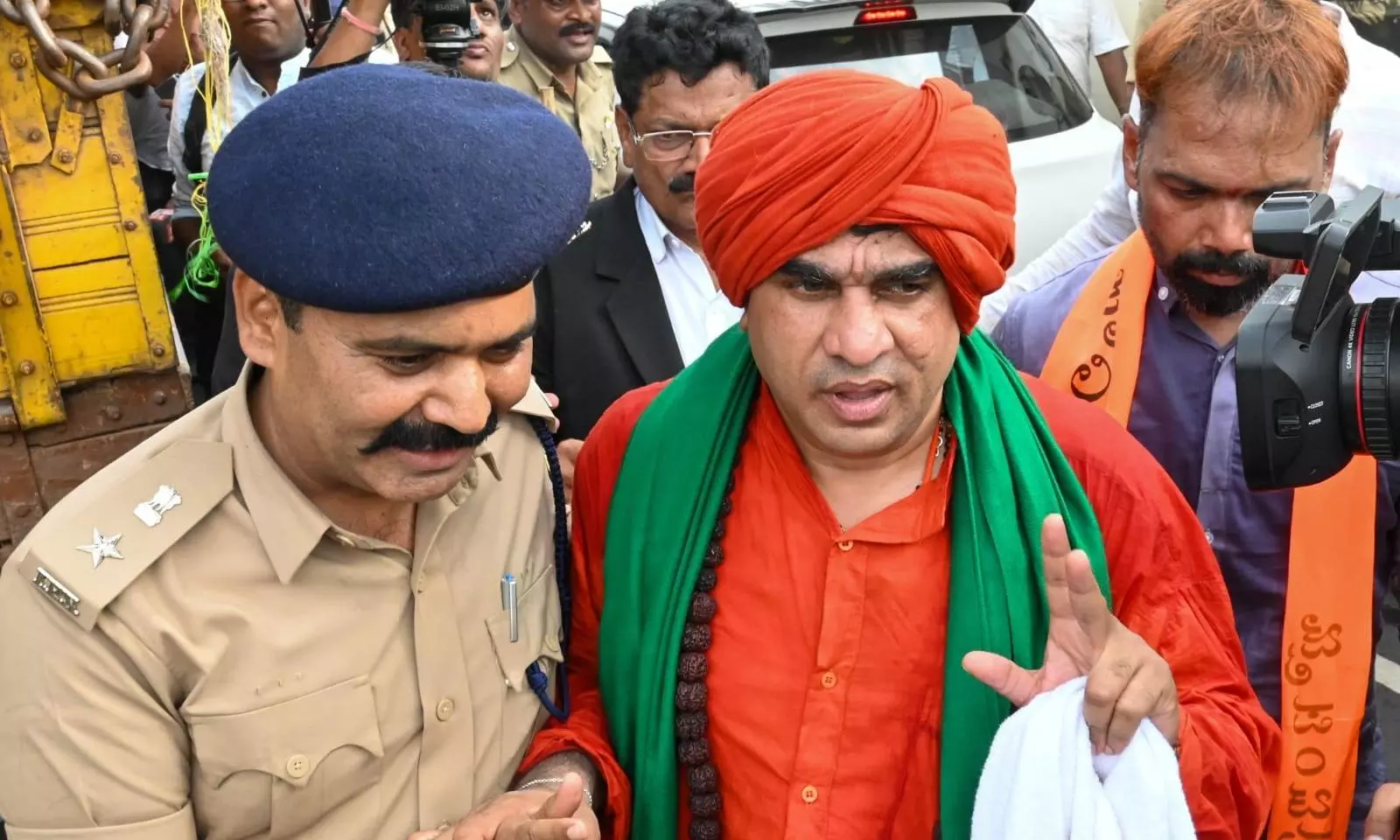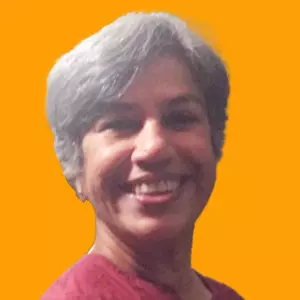
- Home
- India
- World
- Premium
- THE FEDERAL SPECIAL
- Analysis
- States
- Perspective
- Videos
- Sports
- Education
- Entertainment
- Elections
- Features
- Health
- Business
- Series
- In memoriam: Sheikh Mujibur Rahman
- Bishnoi's Men
- NEET TANGLE
- Economy Series
- Earth Day
- Kashmir’s Frozen Turbulence
- India@75
- The legend of Ramjanmabhoomi
- Liberalisation@30
- How to tame a dragon
- Celebrating biodiversity
- Farm Matters
- 50 days of solitude
- Bringing Migrants Home
- Budget 2020
- Jharkhand Votes
- The Federal Investigates
- The Federal Impact
- Vanishing Sand
- Gandhi @ 150
- Andhra Today
- Field report
- Operation Gulmarg
- Pandemic @1 Mn in India
- The Federal Year-End
- The Zero Year
- Science
- Brand studio
- Newsletter
- Elections 2024
- Events
- Home
- IndiaIndia
- World
- Analysis
- StatesStates
- PerspectivePerspective
- VideosVideos
- Sports
- Education
- Entertainment
- ElectionsElections
- Features
- Health
- BusinessBusiness
- Premium
- Loading...
Premium - Events

New numbers may not dislodge dominant groups from their firm perch on socio-economic, educational, political registers, but will impact their heft in Assembly
Karnataka has not yet released the results of its ‘caste survey’ (the Karnataka Socio-Economic and Educational Census of 2014), but the anxiety about the numbers haunts almost all castes.
The two dominant castes, the Lingayats and Vokkaligas, who, based on projections, believe they constitute some 17 and 14 per cent respectively of the nearly 7 crore population of the state, fear that they may be cut to size. In other words, reduced to little more than 10 per cent each.
The Scheduled Caste leadership, on the other hand, has raised strenuous calls for releasing the data as soon as possible, particularly as it is the likely grouping that will top the charts, followed by Muslims.
Challenging the numbers
It is no wonder that the dominant castes have questioned the ‘scientificity’ of the caste survey to dismiss it even before it is made public.
Will the new numbers dislodge them from their firm perch on social, economic, educational and political registers? Not really, but it will impact their heft in legislatures, and will definitely undermine their claim on reservations.
Also read | BJP's unity-safety call is linked to its aversion to caste census
So, the sudden adherence to ‘science’ is, like the recent clamour about history, only an appetite for facts that are palatable. The mathadisha (pontiff) of the powerful Siddaganga matha questioned the scientificity of the census, claiming that no one had approached him for details.
And, the powerful Lingayat-Veerashaiva Mahasabha resolved to demand a more ‘scientific’ survey while instructing its flock not to enter sub-caste details in census forms, but just ‘Veerashaiva Lingayat’.
Dominant groups nervous
The palpable nervousness about consolidating numbers has arisen because sub-castes (such as the numerically significant Panchamasali Lingayats) have, under the leadership of their mathadisha, Basavajaya Mrutyunjaya Swamiji, launched an agitation to tweak reservation quotas.
The largest Lingayat sub-caste, the Panchamasalis, want to be categorised as ‘Relatively More Backward’ class, which is allotted 15 per cent out of the total 32 per cent OBC reservation. Currently, they are slotted along with other Lingayats as ‘Relatively Backward’, and compete for 5 per cent reservation.
The Kurubas, the third most important community, both in population and political importance, want to be reclassified as a Scheduled Tribe (with 3 per cent reservation), and away from their present status as a Relatively More Backward class (with 15 per cent reservations).
The category swapping with an eye on government seats and jobs does not boost the noisy claims for Hindu unity.
Boosting family strength
But it is the smaller fractions, and their anxieties, that are raising even more troubling questions about social change.
At a recent convention of Karnataka Havyaks held in Bengaluru (ambitiously titled the 'Vishwa Havyak Sammelana' and organised by the Akhila Havyaka Mahasabha), the Raghaveshwara Bharati Shree Swamiji attributed the low numbers of Havyakas to the young shirking their duties of marriage and parenthood or confining themselves to one child.
Also read | Why South Indian CMs should stop viewing uteruses as voting machines
He announced a campaign to rectify the situation with the award of ‘Veera Matha’ ('Brave Mother') to women willing to have three or more children. “We don’t have the numbers!” he said over and over again, decrying the representational weakness of Havyakas in political life.
Irresponsible calls
It would, after all, have been a princely irony if he had pleaded, like the Panchamasalis have done, educational and economic backwardness.
All responses to the problem of numbers have not been limited to irresponsible calls to expand the reproductive functions of the family/clan. The fear of declining or small numbers has taken a different form, under the Hindu Right’s call for unity.
In 2022, RSS chief Mohan Bhagwat visited the small, and relatively newer, Shivasharana Madara Channaiah matha at Chitradurga, whose mathadisha, Basavamurthy Madara Channaiah, has long made no secret of his political ambitions.
War cry against conversions
Bhagwat’s advice to Madara Channaiah Swamiji was interesting: to exercise patience about the inequalities, discrimination and social injustices routinely experienced by Madigas in Karnataka.
“It is only a matter of time,” he said, “before they will disappear” – but offered neither a time line nor an idea of what process, legislation or social movement would help realise this utopia.
Also read | Rahul is right; caste reform is only viable path for Congress' future
But his message was clear: Hindu unity mattered more than the indignities and privations that Dalits in Karnataka continue to face.
Now, more than two years later, it appears that the lesson has been well learned. The Madara Swamiji declared this week at Hospet that stemming conversions was an urgent need, even among Dalits facing discrimination, in order to prevent the ‘green flag from being hoisted on the mathas’.
Hindu nation’s votary
Although his rise to political prominence has been ensured by his headship of the Madiga matha, aided by the influential Swamiji of the Chitradurga Murgi Matha, Madara Swamiji has now emplaced himself as a follower of the Brahmin Pejawar Matha Swamiji, for whom the nation (read Hindu Nation) is the most important mission.
That is, separate struggles by the Madigas (who account for less than 2 per cent of the state’s population) for social justice and equality must give way to nationalist duty. Caste matters are to be confined to home, the Madara Swami helpfully suggests.
Almost daily reports of active discrimination against the Karnataka Dalits on issues of temple entry, public humiliation and political representation have done little to diminish the Madara Swamiji’s new passion for a united Hindu nation.
Also read | Congress: With Nitish in NDA, does Modi still find caste survey divisive?
Injustice from birth
His abdication of his role as a spiritual leader of the community, and towards ideas of justice and equality in the spirit of Basavanna, is not difficult to understand. Perhaps it is the recognition of the relative weakness of smaller numbers, among castes with smaller demographic presence, that similarly impelled the Shivarudra Swamiji of the Beli matha to call recently for a different kind of unity among smaller communities to combat their oppression.
It is uncertain which of these calls to unity — for the struggle for dignity and self-redefinition or for surrender (if only temporarily) to the siren song of Hindu nationalism — will eventually triumph. But this much is clear: these contradictory pulls have been the repeated motif of a foundationally divided religious tradition for centuries.
As writer P Lankesh once noted: “Buddha was distressed to see that the status of human beings was determined by birth. The fact that this injustice which the Buddha witnessed thousands of years ago is still continuing tells us some harsh truths about our society.”(The Federal seeks to present views and opinions from all sides of the spectrum. The information, ideas or opinions in the article are of the author and do not necessarily reflect the views of The Federal.)


